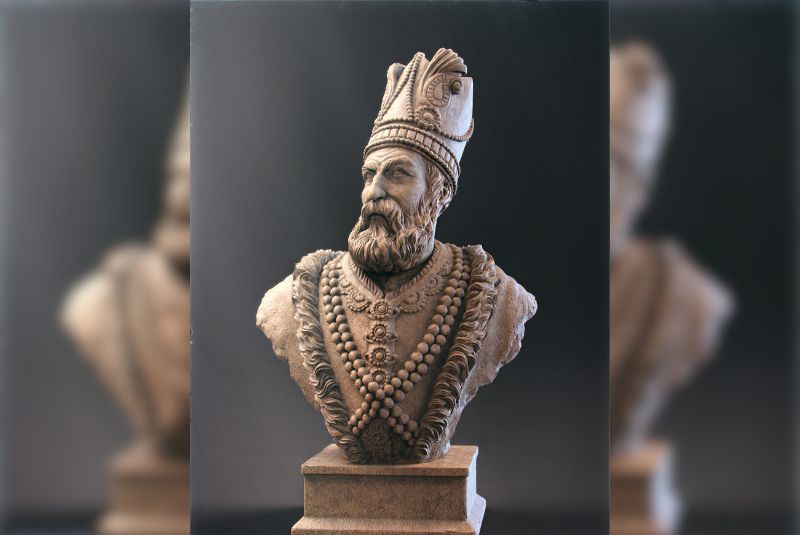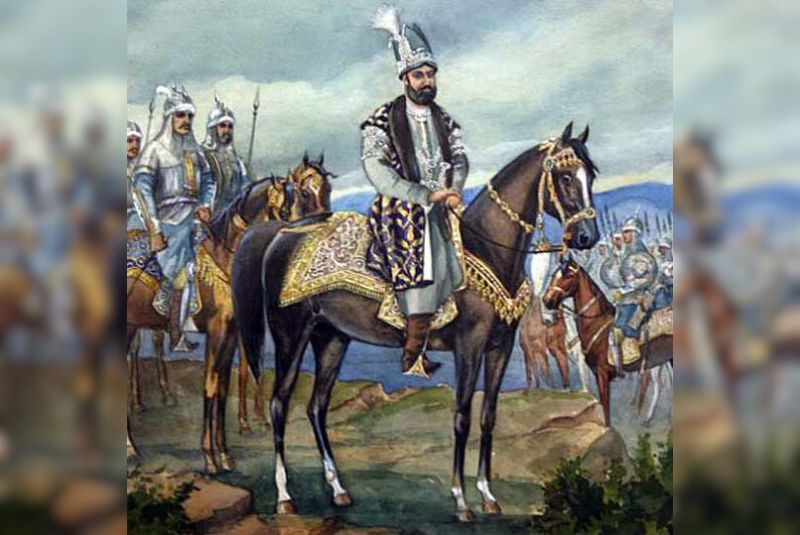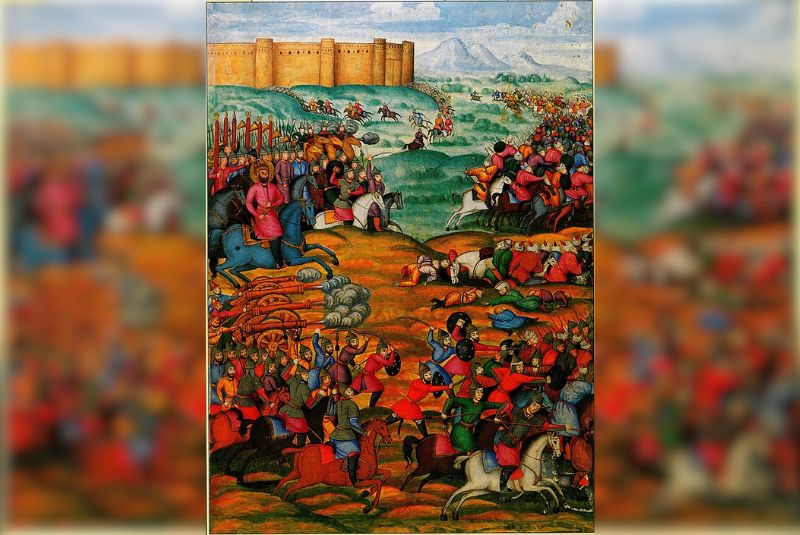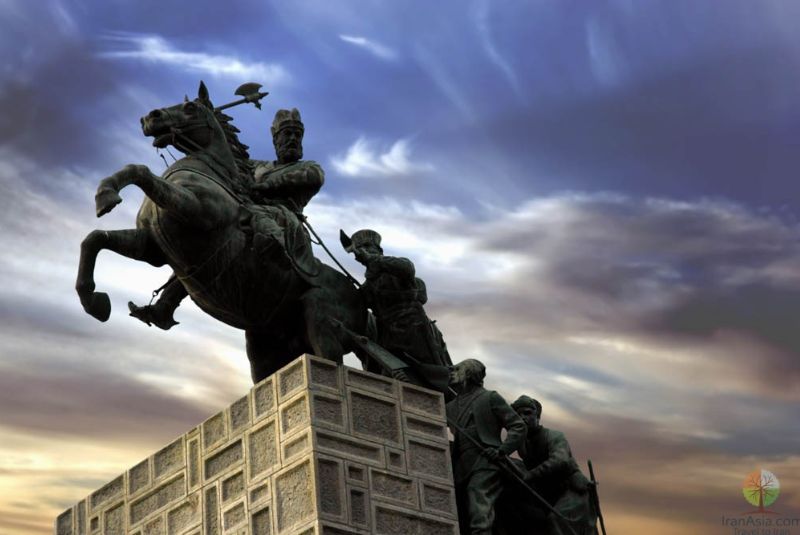Nader Shah Afshar: The Conqueror of Empires
Nader Shah, known as a formidable military leader and ruler, left an indelible mark on Persian history during the 18th century.
Born into the Afshar tribe, Nader Shah Afshar's journey to power began with his ascent from humble origins to becoming the king of Iran. Renowned for his strategic brilliance, he swiftly expanded his empire, gaining the epithet "Napoleon of Iran" for his military conquests. The reign of Nadir Shah reshaped the geopolitical landscape of Persia, as he established the Afsharid dynasty and ruled for twelve eventful years. His legacy is etched in history through his pivotal victories, notably the Battle of Karnal, and his audacious campaign that culminated in the conquest of India, transforming him into a legendary figure in Persian history. This article delves into the life, triumphs, and enduring influence of Nader Shah, shedding light on the remarkable legacy he left behind.
Nader Shah's Early Life and Rise to Power

Birth and Background of Nader Shah Afshar
Nader Shah Afshar, born in 1688 in northern Iran, emerged from modest beginnings that belied his eventual stature as a formidable ruler. His early life was marked by an upbringing within the Afshar tribe, where he imbibed the values of resilience and strength. Showing an early penchant for leadership and a natural affinity for military strategy, Nader Shah swiftly ascended within the ranks of his tribe. His strategic brilliance and military prowess didn't go unnoticed, garnering him respect among his peers and establishing him as a respected figure within the Afshar community.
Driven by ambition and a desire for power, Nadir Shah Afshar carved his path to leadership through a series of strategic alliances and calculated maneuvers. His charisma and leadership qualities earned him the loyalty of followers, enabling his ascent to prominence. Shah Nader's rise from a humble background to becoming a significant figure in Persian history reflects his innate abilities as a leader and strategist. This journey from obscurity to power laid the foundation for his future conquests and the establishment of the Afsharid dynasty, reshaping the course of Iranian history.
Early Military Experiences and Ascent to Leadership
Nader Shah's early military experiences were instrumental in shaping his ascent to leadership. As a young man, Nader Shah Afshar exhibited a natural talent for military strategy and warfare. His formative years were marked by active involvement in local conflicts and skirmishes, where he honed his skills on the battlefield.
His first major foray into leadership came within the Afshar tribe, where his tactical acumen and decisive actions during skirmishes earned him recognition and respect. Shah Nader's ability to command and strategize in the heat of battle set him apart, swiftly elevating him to a leadership position within his tribe.
With each successful campaign and display of military prowess, Nader Shah's reputation as a capable leader grew. His charisma, coupled with his ability to inspire and command loyalty, solidified his position as a rising figure not just within his tribe but among neighboring communities as well. These early experiences and successes laid the groundwork for his ambitious quest for power and his eventual rise to become the influential ruler known in history as Nader Shah.
The Reign of Nader Shah
Afsharid Dynasty and Nader's Rule Over Iran

The establishment of the Afsharid dynasty under King Nadir Shah in 1735 marked a significant turning point in Iran's history. Nader Shah's ascendancy to power reshaped the political landscape, unifying a fragmented Iran under his leadership. His exceptional military prowess and strategic vision enabled him to expand the boundaries of the empire and consolidate control over diverse regions.
During Nader Shah Afshar's rule, his ambitions extended far beyond territorial conquests. He implemented administrative reforms aimed at centralizing authority, fostering economic growth, and enhancing Iran's standing as a regional powerhouse. His reign brought about a period of economic prosperity, trade expansion, and cultural exchange within the Nader Shah empire.
However, despite his achievements, challenges emerged within the empire due to the rigors of his authoritarian rule. Internal dissent and opposition marred the stability he sought to establish, presenting hurdles during his reign.
Nevertheless, Nader Shah's legacy endures as that of a transformative leader whose influence significantly shaped Iran's historical narrative. His reign remains a testament to the remarkable achievements and complexities of an era marked by territorial expansion, economic growth, and socio-political challenges within the empire.
Military Conquests and Expansion of the Persian Empire

King Nadir Shah's reign was defined by his unparalleled military conquests and the consequential expansion of the Persian Empire. His prowess as a military tactician was evident in his calculated campaigns that reshaped the region's geopolitical landscape.
Leading the formidable Nader Shah army, he orchestrated triumphs that extended Iran's borders significantly. The Battle of Karnal in 1739 stands out as a pivotal moment, where his forces decisively defeated the Mughal Empire, paving the way for the annexation of vast territories in India. This victory not only expanded the empire's boundaries but also brought immense wealth and cultural influences back to Persia.
Nader Shah's audacious incursions into India were only a part of his grand conquests. His military campaigns reached as far as Central Asia, Azerbaijan, and the Caucasus, solidifying Persian control over diverse regions.
His strategic brilliance wasn't limited to military might; he fostered diplomatic alliances and navigated complex political landscapes to expand the Persian Empire's influence. Despite facing opposition and challenges, Nader Shah's military endeavors left an enduring mark on the history of Iran, highlighting an era of expansive territorial acquisitions and significant geopolitical dominance in the region.
Notable Battles and the Conquest of India

Nader Shah Afshar's legacy is underscored by his decisive victories, notably the pivotal Battle of Karnal in 1739, marking a significant milestone in his military exploits. When did Nadir Shah attack India? It was during this battle that Nader Shah's forces confronted and decisively defeated the Mughal Empire, allowing for the conquest of substantial territories in India.
The Battle of Karnal became emblematic of Nader Shah's military genius. Despite being outnumbered, his strategic prowess and tactical brilliance secured a resounding victory. This triumph not only expanded the Persian Empire's boundaries but also ushered in immense wealth and cultural treasures to Persia, including the fabled Peacock Throne, the Koh-i-Noor diamond and the Daria-i-Noor diamond.
Nader Shah's incursion into India left an indelible mark on history. His military campaigns extended beyond the Battle of Karnal, encompassing a series of conquests that solidified Persian dominance in the Indian subcontinent for a brief yet influential period.
The conquest of India under Nader Shah Afshar's leadership brought unparalleled riches and cultural artifacts back to Persia, shaping the empire's wealth and influence. These triumphs showcased Nader Shah's strategic acumen and cemented his legacy as a remarkable military leader whose conquests significantly impacted the course of Persian and Indian history.
Nader Shah's Legacy and Impact
Influence on History

Following Nader Shah's demise, his legacy reverberated throughout Persian history and the broader region, leaving a multifaceted impact that shaped the geopolitical landscape for years to come. His death in 1747 triggered a power vacuum, plunging the empire into a period of tumultuous upheaval.
The vacuum left by Nader Shah's absence led to a fragmented Iran, marked by internal power struggles among various factions vying for control. The absence of a unifying figurehead allowed external forces to encroach upon Persian territories, resulting in geopolitical instability and territorial losses.
Moreover, the repercussions of Nader Shah's authoritarian rule persisted. His heavy-handed governance and oppressive taxation, although instrumental in expanding the empire, left a legacy of discontent among his subjects. This discontent culminated in widespread revolts and uprisings against subsequent rulers, contributing to further internal strife and weakening the central authority.
Nader Shah's military campaigns and conquests, particularly in India, profoundly influenced the region's dynamics. His incursion into India reshaped the balance of power, albeit temporarily, and brought significant cultural artifacts and wealth back to Persia.
The enduring impact of Nader Shah's reign is echoed in historical accounts and references, including the enigmatic "Nader Shah book," a subject of historical fascination that continues to offer insights into his life, conquests, and governance.
Ultimately, Nader Shah's legacy is characterized by a mix of achievements, controversies, and the consequential power vacuum post his demise, leaving a lasting imprint on Persian history and regional politics.
The Decline of the Afsharid dynasty and Subsequent Events

Following the demise of Nadir Shah of Persia, the once-mighty Afsharid dynasty experienced a rapid decline, plunging the realm into a state of chaos and instability. The absence of a strong, unifying figurehead like Nader Shah triggered a power struggle among his generals and heirs, shattering the unity that had briefly characterized the empire.
Nader's death became a catalyst for fracturing the centralized authority he had painstakingly built. His successors vied for control over the fragmented empire, leading to internal conflicts and regional uprisings. With no clear successor to Nader's leadership, various factions emerged, each aspiring to claim sovereignty over parts of the once-vast territories under Afsharid rule.
The ensuing power vacuum allowed local warlords and rival tribes to assert their dominance, further fragmenting the realm. This period marked the ascent of ambitious leaders like Karim Khan of the Zand tribe and Ahmad Shah Durrani, later known as Ahmad Shah Abdali, who established their own spheres of influence.
In Khorasan, Nader's nephew, Ali Qoli Khan, assumed the title of "Adelshah," perpetuating internal conflicts by massacring Nader's family members. The Afsharid dynasty's decline ultimately paved the way for the rise of new regional powers, heralding the emergence of the Zand and Durrani dynasties, which further reshaped the political landscape of the region.
The tumultuous aftermath of Nader Shah's demise illustrated the fragility of centralized authority and the challenges of succession, ultimately altering the course of Persian history and paving the way for the ascendance of new dynasties across the region.
Nader Shah's Mausoleum and Historical Significance
The Tomb of Nader Shah in Mashhad

The Tomb of Nader Shah in Mashhad stands as a testament to an era of formidable conquests and turbulent leadership in Persian history. Constructed within the Naderi Garden complex, this mausoleum commemorates the life and legacy of Nader Shah Afshar, a figure marked by military brilliance and a tragic end.
Nader Shah, a towering figure in Persian history, met his demise in 1747 under dramatic circumstances. While encamped in Khorasan, he was attacked in his tent at night by a group of his own generals, led by Ali Qoli Khan. This assassination was a culmination of mounting discontent among his commanders, discontent with Nader Shah's autocratic rule and suspicions of treachery.
The mausoleum, designed by Hooshang Seyhoun in 1963, holds immense historical significance. Located northwest of Shohada (former Naderi) Crossroad in Mashhad, it serves as a prominent historical landmark, second only to the venerated shrine of Imam Reza.
Adorned with a platform featuring twelve bridges, a tent-like cover over the grave, and a striking statue depicting Nader Shah on horseback followed by three warriors, the mausoleum symbolizes the ruler's martial prowess and leadership.
The Tomb of Nader Shah stands as more than just a physical structure; it represents an intricate narrative of power, ambition, and the dramatic end of a ruler whose life and death left an indelible mark on Persian history, inviting contemplation and reflection upon the complexities of leadership and the transient nature of authority.
Nader Shah's Enduring Legacy and Remembrance

Nader Shah's enduring legacy continues to resonate through the annals of Persian history, leaving an indelible mark on the cultural fabric of Iran. His story, a blend of conquest, ambition, and tragedy, remains enshrined within the walls of the mausoleum erected in his honor.
Beyond the physical structure of the mausoleum, Nader Shah's lasting impact reverberates through the collective memory of Iranians. His reign, marked by military prowess and territorial expansions that briefly unified disparate regions, echoes through the pages of history as a testament to his vision and determination.
The mausoleum stands not just as a commemoration of Nader Shah's life but as a reminder of the complex interplay between power and its consequences. It symbolizes the paradox of a ruler whose ambition reshaped the geopolitical landscape yet succumbed to the pitfalls of power, meeting his tragic end within the confines of a tent.
Amidst the historical grandeur and the sobering reminders of his final moments, visitors to the Tomb of Nader Shah are offered a chance to ponder the fleeting nature of power and the complexities of leadership. It serves as a place of contemplation, inviting reflection on the legacy of a man whose ambitious conquests once reshaped the course of Persian history, leaving an enduring imprint on the collective consciousness of Iran.

Finally!
Nader Shah Afshar's legacy embodies a complex tale of triumphs, conquests, and ultimate downfall, shaping Iran's historical trajectory. His ambitious military campaigns expanded Iran's territorial reach and briefly restored unity amidst regional chaos. However, his reign's end unveiled the perils of absolute power, leading to the disintegration of the Afsharid dynasty. Despite the dynasty's collapse, Nader Shah's conquests left an indelible imprint, reshaping the region's geopolitics. His mausoleum in Mashhad serves as a poignant reminder of a ruler whose ambitions and demise reflect the intricate dynamics of leadership and power, inspiring reflection on the transience of authority and the intricate legacies of historical figures like Nader Shah Afshar.
Share your story!
Comment below and let us know about your Experience.
Your story inspires others!


Comment
Leave a Comment